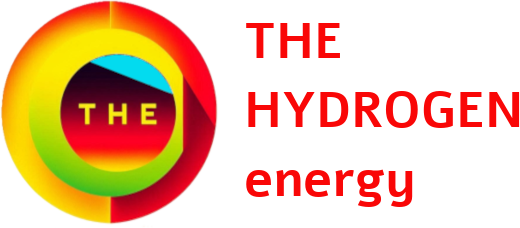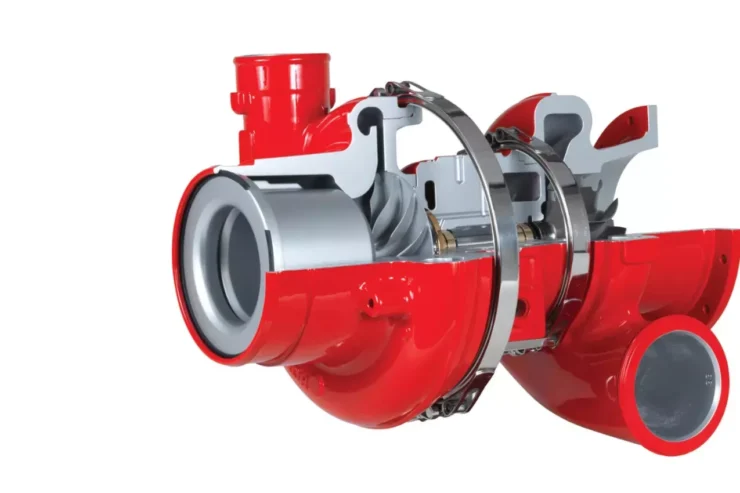Turbocharger for Hydrogen Engines: Cummins’ new H2 ICE turbocharger is revolutionizing the heavy-duty trucking industry. Learn about the technology, challenges overcome, and how it’s contributing to global decarbonization and meeting Euro VII standards.
Global power and technology leader, Cummins Inc., has announced a significant leap forward in sustainable transportation with the launch of its revolutionary turbocharger, specifically designed for hydrogen internal combustion engines (H2 ICE). This development marks a key milestone in the heavy-duty commercial on-highway sector in Europe, showcasing Cummins’ commitment to a zero-emission future.
Turbocharger for Hydrogen Engines (H2 ICE Turbocharger): A Game Changer for Heavy-Duty Transportation
The new H2 ICE turbocharger, developed by Cummins Components and Software (CCS), represents a major stride in the pursuit of low-emission transportation solutions. This turbocharger is not a mere adaptation of existing technology, but a bespoke design addressing the distinct requirements of hydrogen combustion. Specifically designed to power the first H2 ICE for heavy-duty trucks in Europe, it addresses the growing demand for more sustainable solutions.
Turbocharger for hydrogen engines innovation underscores Cummins’ strategic focus on decarbonization. The H2 ICE engine technology, recognized by the European Union (EU) as zero-emission, offers a practical, near-term alternative for reducing emissions. The compliance of H2 ICE engines with the stringent Euro VII emission standards underscores the viability of hydrogen as a key component in the global shift towards cleaner transportation.
Turbocharger for Hydrogen Engines, Technical Innovations:
The Cummins H2 ICE turbocharger is not simply an adaptation of existing turbocharging technology; it’s a meticulously engineered system designed from the ground up to address the unique challenges of hydrogen combustion. Turbocharger for Hydrogen Engines is based upon this variable geometry turbocharger (VGT) which is at the forefront of turbocharging innovation, incorporating several key features:
- Bespoke Aerodynamics for Enhanced Hydrogen Combustion Efficiency
- Advanced Impeller and Turbine Blade Design: Cummins engineers have employed advanced computational fluid dynamics (CFD) simulations to optimize the impeller and turbine blade profiles for the unique characteristics of hydrogen. This includes adapting the blade angles, shapes, and curvature to achieve maximum aerodynamic efficiency with hydrogen’s lower density and higher flame speed. The design includes considerations for varying inlet conditions, ensuring optimal performance across the engine’s operating range.
- Optimized Volute Design: The turbocharger volute (the spiral casing) is redesigned to ensure smooth airflow to the turbine, minimizing turbulence and pressure drop. This ensures efficient conversion of exhaust gas energy into turbine power. The volute is designed to handle the high volumetric flow rates of hydrogen combustion products.
- Reduced Inertia Components: The turbocharger utilizes low-inertia rotor assemblies, which can quickly respond to changes in engine load, resulting in improved transient performance and reduced turbo lag. This is crucial for maintaining high engine responsiveness in the dynamic environments of heavy-duty trucking. The impeller and turbine are carefully balanced for high speed operation.
- Improved Compressor Efficiency: The compressor design also employs variable geometry features to optimize performance at varying altitudes and ambient temperatures. The compressor maps are specifically developed for the unique conditions of hydrogen combustion. The compressor is also designed for higher flowrates compared to traditional turbochargers.
- Advanced Prognostics and Real-Time Performance Monitoring
- Integrated Sensor Suite: The turbocharger incorporates a sophisticated array of high-precision sensors, including speed sensors, temperature sensors (both gas and component temperatures), pressure sensors (both boost pressure and back pressure), and vibration sensors. These sensors provide a detailed view of the turbocharger’s operating conditions in real-time.
- Predictive Algorithms: Advanced machine learning algorithms analyze real-time data from the sensors, to predict performance degradation and identify the potential for failure before they occur. This includes algorithms for analyzing temperature variation, boost pressure patterns, vibration, and other parameters. These algorithms continuously update to learn the turbocharger’s performance over time and predict potential maintenance needs.
- Diagnostic Software Integration: The diagnostic system seamlessly integrates with Cummins engine control system, providing real-time data and alerts to operators, enabling proactive maintenance to prevent potential downtimes. This predictive analytics enables scheduled maintenance based on real conditions rather than traditional time based maintenance schedules. The system monitors for out-of-bounds conditions and sends an alert to the operator.
- Water Production Monitoring: Specific sensors designed to measure water accumulation within the turbocharger are included, which signals any issues related to increased water output and drainage.
- Variable Geometry Technology (VGT) for Dynamic Performance
- Precision Actuation Mechanism: The VGT employs a highly precise actuation mechanism to control the position of the turbine vanes. This mechanism provides fine-grained control of the turbine’s flow path, enabling the turbocharger to deliver optimum performance across a wide range of engine operating conditions.
- Advanced Control Strategy: The actuation system is controlled by advanced algorithms in the Engine Control Unit (ECU) which receives data from the engine, and the turbocharger sensors, and dynamically adjusts the position of the vanes for optimal performance.
- Optimized Boost Control: The VGT allows for precise control of boost pressure, which in turn helps improve engine torque, responsiveness, and fuel efficiency. The VGT control system is dynamically adjusted based on the engine operating conditions.
- Improved Low-End Torque: By utilizing variable geometry, the turbocharger can deliver higher boost at low engine speeds, enhancing low end torque and engine responsiveness.
These technical enhancements highlight Cummins’ dedication to innovation and their ability to deliver a turbocharger that not only meets the demands of hydrogen combustion but also optimizes the overall performance of heavy-duty hydrogen engines.
Overcoming the Challenges of Hydrogen Combustion
The development of the Turbocharger for hydrogen engines required significant innovation to overcome several technical challenges:
- Managing Variable Lambda Requirements:
- Hydrogen combustion requires precise air-fuel ratios (lambda) which can vary significantly.
- The turbocharger was engineered to function efficiently across this broader spectrum of lambda conditions, ensuring consistent engine performance.
- The control system of the turbocharger has to quickly adapt to ensure that the required lambda is maintained during transient operations.
- Addressing Increased Water Production:
- Hydrogen combustion creates a higher volume of water compared to conventional fuels.
- The turbocharger’s design and materials had to be adapted to manage this increased water output without any performance degradation.
- The material selection was critical to prevent water related corrosion.
- Mitigating Metallurgical Impacts of Hydrogen:
- Hydrogen can cause embrittlement in certain metals.
- Cummins selected specific materials and incorporated unique manufacturing processes to prevent structural issues related to hydrogen.
By overcoming these challenges, Cummins demonstrates its engineering expertise and leadership in developing hydrogen technologies for heavy-duty applications.
Turbo Hydrogen Engine, Compliance with Euro VII Emission Standards
Designing this new turbocharger for hydrogen engines, Cummins’ hydrogen internal combustion engine (H2 ICE) technology has been classified as zero-emission by the European Union (EU), making it a promising bridge solution for reducing emissions in heavy-duty applications. Furthermore, this technology complies with the upcoming Euro VII emission standards, showcasing hydrogen’s potential as a viable alternative fuel source in the journey toward global decarbonization.
Conclusion: Pioneering a Hydrogen-Powered Future
The launch of the H2 ICE turbocharger by Cummins signifies a major advancement in hydrogen technology for heavy-duty transportation. By addressing the inherent challenges of hydrogen combustion and delivering a reliable, high-performance turbocharging system, Cummins is charting a course toward a cleaner, more sustainable future. This innovation underscores the potential of hydrogen to power the next generation of heavy-duty vehicles and contributes significantly to global decarbonization efforts. As industries continue to explore hydrogen as a viable energy source, innovations like these will play a crucial role in shaping the landscape of clean transportation technologies.
This content is protected by copyright and cannot be reused without permission. For collaboration inquiries or to request content usage rights, please get in touch with us: info@thehydrogen.energy







Add comment